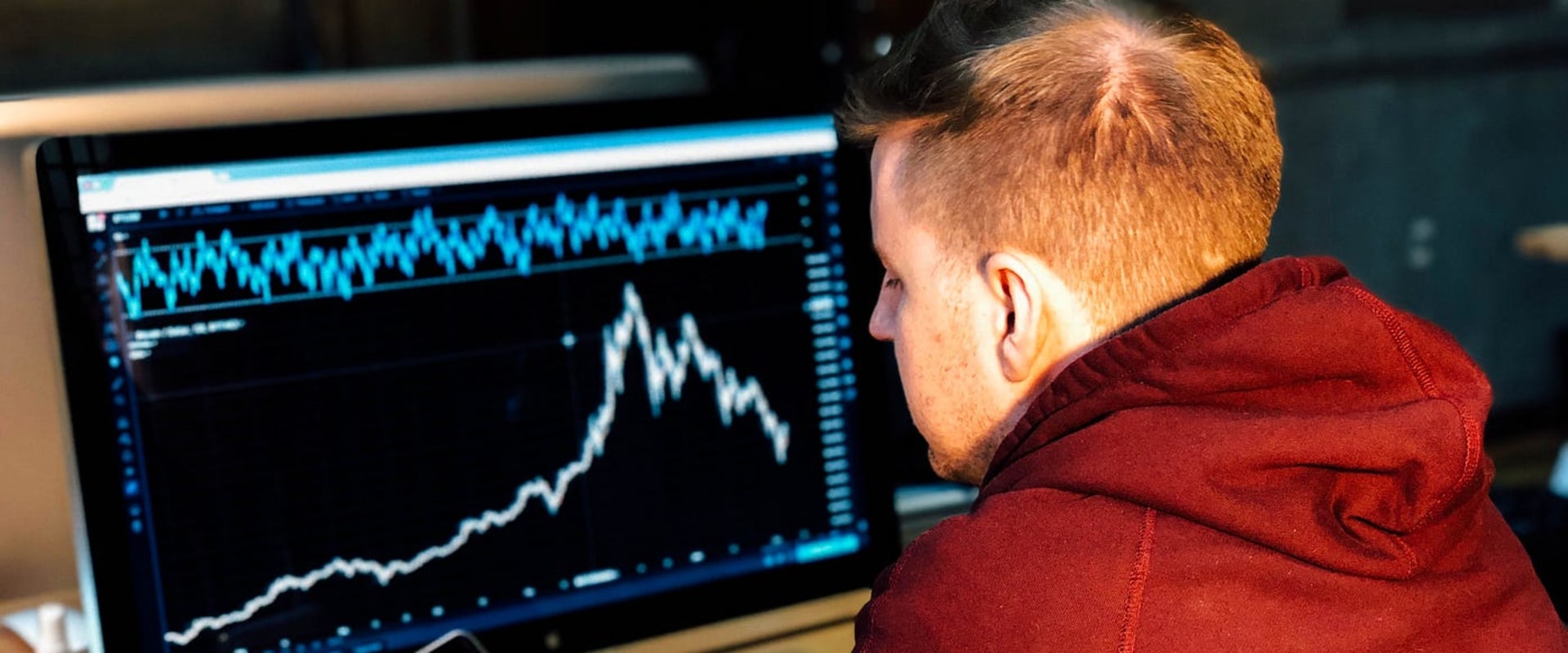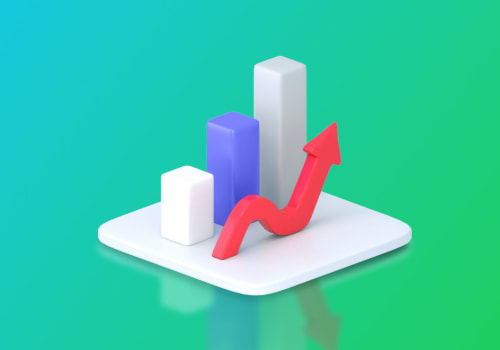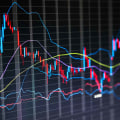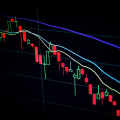Are you looking for ways to optimize your system for forex trading? If so, then you've come to the right place. In this article, we'll provide you with the essential tips and tricks you need to know in order to improve the performance of your trading system. We'll discuss the development process, from creating a plan to testing and tweaking the system. We'll also discuss the different types of strategies available and how to choose the most effective one for you.
By the end of this article, you'll have all the knowledge you need to take your trading system to the next level. Optimizing a system is an important part of any successful Forex trading strategy. By optimizing a system, a trader can ensure that their trading decisions are based on the best possible information and make the most out of their trades. In this comprehensive guide, we'll go over the process of optimizing a system, from understanding the basics of system development to putting it into practice with real-time trading. We'll also look at some of the most important considerations when optimizing a system, as well as some tips and tricks to help you get the most out of your trading experience. To begin, let's start by looking at what system optimization is and why it is so important for Forex traders.
System optimization is a process of taking an existing trading system and modifying it in order to improve its performance. This process involves analyzing data, making changes to risk management strategies, selecting strategies, and testing the system before implementation. By optimizing a system, a trader can ensure that their trades are based on the most accurate information available and that their strategies are as efficient as possible. When developing a system, there are several components that need to be taken into consideration. Data analysis is one of the most important aspects of system optimization, as it allows traders to identify trends and patterns in the market that can be used to make more profitable trades.
Additionally, risk management strategies need to be implemented in order to protect traders from any potential losses. Finally, strategy selection is important in order to identify the best strategies for each individual trader. The process of optimizing a system begins with defining objectives. This includes determining what type of trades will be made, the desired return on investment (ROI), and any other goals that need to be achieved. Once these objectives have been established, traders can then select strategies that match their objectives.
Once a strategy has been selected, traders can then begin backtesting and paper trading in order to test their strategies and identify any potential problems before implementing them in real-time trading. Backtesting and paper trading are important when optimizing a system because they allow traders to assess how their strategies will perform in different market conditions. By testing their strategies in simulated markets, traders can get an idea of how their strategies would perform in real-world scenarios. Additionally, these tests also help traders identify any potential risks associated with their strategies before implementing them in real-time trading. There are many examples of successful systems that have been optimized for Forex trading. These systems often employ advanced techniques such as algorithmic trading or automated trading robots.
These systems are usually more efficient than manual systems because they can take into account more variables and execute trades faster. Additionally, many of these systems have been tested extensively in backtesting scenarios before they are implemented in real-time trading. When optimizing a system, there are several common pitfalls that need to be avoided. One of the most common mistakes is over-optimizing a system. This occurs when a trader makes too many changes to their system without properly testing them first.
Additionally, it is also important to avoid changing too many parameters at once as this can lead to unexpected results. Finally, it is also important to ensure that all parameters are set correctly so that any changes do not affect the overall performance of the system. Automated systems can be advantageous for Forex traders because they allow traders to take advantage of opportunities quickly without having to constantly monitor the market. In order to set up an automated system, traders must first define the parameters of their system and then set up automated rules that will execute trades based on those parameters. Automated systems can provide significant advantages over manual systems because they can take into account more variables and execute trades faster. In conclusion, optimizing a system is an important part of any successful Forex trading strategy.
By understanding the basics of system development and putting it into practice with real-time trading, traders can ensure that their trading decisions are based on the best possible information. Additionally, backtesting and paper trading are important steps for optimizing a system as they can help traders identify potential risks associated with their strategies before implementing them in real-time trading. Finally, automated systems can provide significant advantages over manual systems due to their ability to take into account more variables and execute trades faster. By following these steps and avoiding common pitfalls associated with optimizing systems, traders can maximize their success in Forex trading.
Advantages of Automated Systems
Using an automated system for Forex trading can provide significant advantages over manual trading.Automated systems are faster and more accurate than manual trading, as they are designed to execute trades at the optimal time. They can also help to reduce the emotional impact of trading, allowing you to take a more objective approach to your trades. When setting up an automated system, it's important to pay attention to the rules you set. It's best to start with simple rules and gradually build up complexity as you become more confident with the system.
You should also consider the types of indicators you use, and make sure they are suited to your trading style. Additionally, it's important to test the system thoroughly before using it with real money. Once you have set up your automated system, it is important to monitor it closely and adjust the rules or indicators as needed. It's also a good idea to backtest your system on historical data to ensure its accuracy and stability.
Finally, remember that automated systems do not guarantee profits, so be sure to use sound money management strategies.
Optimizing Your System
Optimizing a system is an important part of any successful forex trading strategy. It involves understanding the objectives of the system, selecting strategies and indicators that align with those objectives, and then testing and implementing them. Backtesting and paper trading are two important aspects of optimizing a system, as they allow for a thorough analysis of potential performance and risk. When optimizing a system, it's important to start by defining the objectives of the system. This will help to identify the types of strategies and indicators that should be used to achieve those objectives.Once the strategies and indicators have been selected, they can be tested using backtesting and paper trading. Backtesting allows traders to analyze historical data to determine how successful the system would have been if it had been implemented in the past. Paper trading is a form of simulated trading that allows traders to practice their strategies without risking any real money. It's also important to consider the risks associated with optimizing a system. While backtesting and paper trading can provide useful insights into potential performance, there is no guarantee that these strategies will be successful in the future.
Additionally, it's important to remember that optimizing a system requires time, effort, and resources. As such, it's important to weigh the potential benefits against the risks before embarking on any system optimization efforts.
Understanding System Development
Understanding system development is essential for making the most out of Forex trading. System development involves a range of components, such as data analysis, risk management and strategy selection. Data analysis is used to identify potential trends in the market, which can be used to inform future trades.Risk management helps to reduce the risk of losses by setting up guidelines and trading parameters. Strategy selection involves determining the best approach to trading by analyzing a range of factors. When optimizing a system, it is important to understand the different elements of system development and how they work together to maximize success. For example, data analysis and risk management can be used in combination to identify potential areas of risk and capitalize on profitable opportunities. Additionally, understanding the mechanics of strategy selection can help traders gain an edge in the market, as they will have a better understanding of when to enter and exit trades. In addition to understanding the basics of system development, it is also important to consider other factors that may impact the success of your trading system.
These factors include market conditions, psychological factors, and trading experience. Market conditions can affect the performance of a system, as certain strategies may be more or less effective depending on current market conditions. Psychological factors also play an important role in trading success, as traders must stay disciplined and focused in order to make the most out of their trades. Finally, trading experience can help traders identify potential opportunities and minimize risks associated with trading.
Common Pitfalls & Tips
Optimizing a system can be a complex process, and there are many pitfalls that can lead to costly mistakes.Before you dive into optimizing your system, it is important to be aware of these potential issues so that you can avoid them. Here are some of the most common pitfalls associated with system optimization and tips on how to avoid them:1.Over-optimization: Over-optimization occurs when you adjust parameters too much in order to achieve a specific result. This can lead to a system that works well in the past, but not in the future. To avoid this, be sure to use a proper risk management strategy and only adjust parameters when necessary.
2.Insufficient Testing:
When optimizing a system, you need to make sure that you thoroughly test it before using it for real-time trading.Without testing, you could end up with a system that may not perform as expected in live trading. To avoid this, use backtesting and simulated trading to test the effectiveness of your system.
3.Overlooking Risk Management:
Risk management is essential when optimizing a system. Without proper risk management, you could end up taking on too much risk and losing money. To ensure proper risk management, use a stop-loss and take-profit order for each trade and set realistic expectations for your system.4.Not Adjusting for Market Conditions:
The markets are constantly changing, and the performance of your system can be affected by these changes.To ensure that your system is adjusted for market conditions, you should regularly review its performance and make adjustments when needed.
5.Ignoring Data Quality:
The data you use to optimize your system must be accurate and reliable in order for your system to perform correctly. If the data is not of good quality, it can lead to inaccurate results. To ensure data quality, use data from reputable sources only.Examples of Successful Systems
When optimizing a system for forex trading, it's important to look at examples of successful systems to get an idea of what works and what doesn't. Some of the most successful systems have been optimized for currency pairs, while others have been designed to take advantage of stock or futures markets.By studying these examples, you can get a better understanding of what makes a successful system. Here are some examples of successful systems that have been optimized for forex trading.
Scalping
- Scalping is one of the most popular strategies for forex trading. It involves taking small profits from many trades over a short period of time. Scalping is often employed by day traders who are trying to make a quick profit on the market.While scalping is considered to be a risky strategy, it can be incredibly profitable if done correctly.
Trend Following
- Trend following is another popular strategy that can be used in forex trading. This system involves identifying and following trends in the market in order to capitalize on them. This type of system is often used by long-term traders who are looking to take advantage of big moves in the market.Range Trading
- Range trading is a strategy that involves taking advantage of price ranges in the market. This type of system will look for trends in the market and then place trades based on those trends.Range traders will typically look for trends that are likely to continue and use those as signals to enter and exit trades.
Hedging
- Hedging is a strategy that involves taking both long and short positions at the same time. This type of system is often used by traders who are looking to limit their risk and protect their capital from large losses. Hedging can also be used to generate profits from both rising and falling markets. By studying these examples, you can get a better understanding of what makes a successful system for forex trading. It's important to understand how each type of system works and how it can be optimized for the best results.With the right combination of strategies, you can maximize your profits in the forex market. Optimizing your system for forex trading is an essential part of achieving success in the market. It requires understanding the basics of system development, optimizing your system, examples of successful systems, common pitfalls and tips, and the advantages of automated systems. When optimizing a system, important considerations include data accuracy and relevance, risk management, and cost. Additionally, it is important to research and understand the different strategies available to ensure that you are using the best system for your needs.
With the right understanding and tools, you can optimize your system for forex trading and maximize your potential for success.












Leave Reply